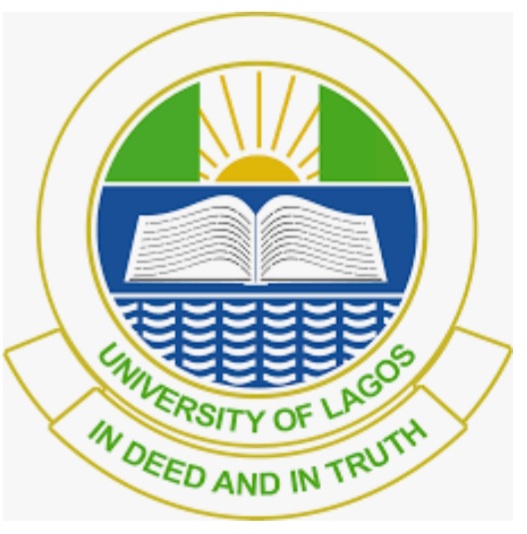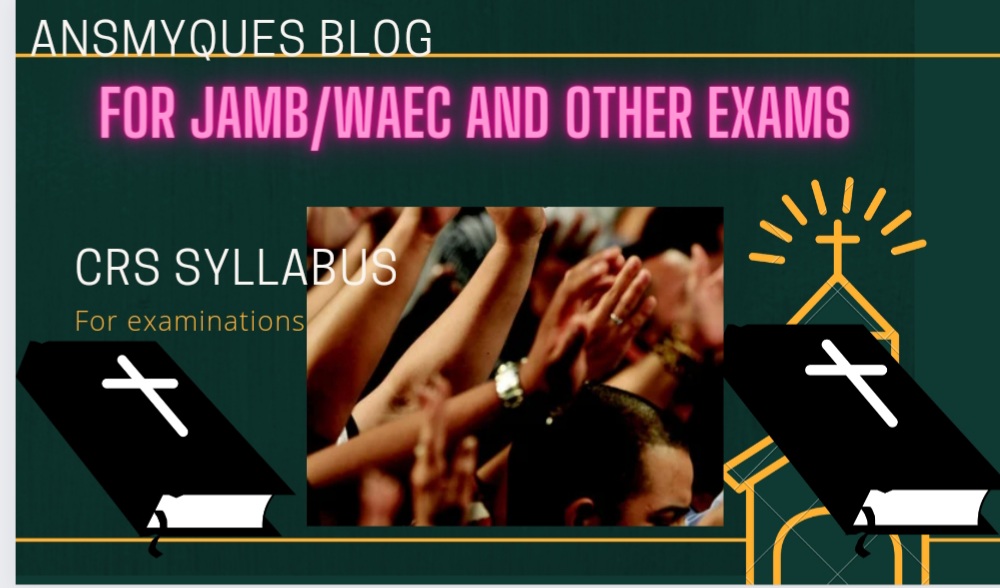What is Africa Instituted Church, Stuctures and features
WHAT IS AIC ??
The AIC is the full meaning for African indigenous or instituted or initiated churches, these are churches in the sub Saharan Africa by Africa during the late 19th century and 20th century. They are churches for Africans, by Africans and of African heritage. They deal with infusing African culture and practices into Christianity. They are responsible for passage of Christian to Africa in diaspora.
CHARACTERISTIC OF AIC
(a) Emphasis on Prayer : A common feature of the AICS is their emphasis or reliance on prayer. It is observable that prayer not only forms the bedrock of their practice and doctrine but they also believe that prayer is the fountain head of all their blessings and Successes. It is not surprising then that the Yoruba refer to these churches as the Aladura (Praying People). This name confers on them an identity that they are for no other business than to pray. This seems to suggest that all other functions are secondary. Among the Yoruba, the spiritual leaders are affectionately called Baba Aladura and lya Aladura (for women). It is their habit to pray several times in a day. Some enjoin and observe “hours of prayers” (like in Judaism) and night vigils. Most of these churches have intercessory (prayer) groups called “Prayer Warriors” – Afadura Jagun (Yoruba)Mpaebo-Kuo (Akan). It is their sole responsibility to pray and fast for those who have problems and to commit special programmes of the churches into God’s hands.
Quite a number of these churches have some “special places” where they “wrestle prayer”. They are called ‘Mercy-land,’ ‘place of refuge,’ ‘Garden,’ etc. Those who are close to the Sea, go to the “Bar-beach” to pray regularly. They also use what they call “prayer-aids.” These include some model prayer books with “holy names,” the book of Psalms, candles, incense and palm-fronds
(b) Emphasis on the ‘Spiritual’ As we have mentioned earlier (in chapter 1), several of the AICs prefer the term
‘Spiritual Churches- lio Emi(Yoruba) Sunsum Sore (Akan) Momo Sulemo (Ga) Ishoshi rerhi (Urhobo); (Uka Monso Nsuko (Igbo). By this they mean that theirs is a Church directed by the Holy Spirit. Most of the founders and leaders of AICs are men in quest of spiritual contemplation and all of them claim spiritual motivation for the founding of their organisations.
The AICs give spiritual interpretation to virtually all happenings especially misfortunes and failures in life such as barrenness, poverty, illnesses, unemployment, prolonged pregnancy, disappointment and so on. This underlying belief in spiritual causation explains why spirit-induced services, Faith healing, and exorcism feature prominently in their deliverance services.
The Holy Spirit is believed to feature prominently in their worship as He manifests through visions, interpretation of dreams, ecstatic behaviour and prophetic utterances. It is for this reason, that in some of these churches, members are enjoined to wear white gowns. They claim “the Spirit likes white apparel which is the sign of the Spirit–purity or holiness.”!
(c) Interest in Divine Healing
The practice of cura divina (divine healing) is, some members contend, one of the most important benefactions to its members. Of course, in West African nations where there are very few hospitals, and costly medicine is beyond the reach of the majority, one would reasonably expect that the promise of cura divina would attract a number of people. Indeed, sickness is by far the most common reason which people give for attending AICs.
Testimonies of healing, soundness and miracles are heard from many about their answered prayers. In quite a number of cases those concerned claim that they first went to the hospitals, and or consulted traditional healers.
They then resorted to an indigenous church when the foreign physicians and herbalists failed them.
In several AICs, special days (usually Wednesday and Friday) are set aside for healing purposes. In quite a few, healing services are conducted everyday. Sometimes, the invalid would be expected to stay in the Church, in the “faith homes” nearby or in some apartment in the Pastorium while they receive treatment. In some churches, the ‘Spiritual or Faith Homes’ serve as clinics and maternity centres for pregnant women.
(d) Attention given to Women
One of the distinctive features of these churches is the elevated position accorded to women. In spite of the fact that the Mission Churches preach the principle of equality of sexes, men usually hold the principal positions of authority. The Archbishops, Reverend Ministers, Pastors, Priests, Choir Leaders and so on are usually all men.
AICs, on the other hand, have been exceptional in encouraging women to participate in the ministry of the Church. They provide opportunities for leadership and the exercise of authority for women who usually far out number the men who attend these churches.
Some of these Churches were and are being established or co-founded by women Omoyajowa has a long list of such founders in Nigeria. Asare Opoku also observed that there are women first-class prophetesses and deaconesses in the Musama Disco Christo Church in Ghana. Alice Lakwena of Uganda was another woman-founder of a Holy Spirit movement. Other positions of leadership for women, as Omoyajowo and Barrett show include: Reverend-Mothers, Lady leaders, Mothers-in-Israel, Superior-Mothers, Praying-Mothers, Lady-Evangelists, Women Church Planters and so on. It may also be added that in these Churches women get more possessed, they are prone to give more testimonies, they are more operative in initiating songs, dancing, jumping and clapping, than men. From the foregoing it is not surprising to note that there are usually far more women societies, prayer groups, hospitality associations and welfare unions than men’s in the AICs.
(e) Affection for freer form of worship
One of the fascinating features of the AICs is their so called free and lovelier mode of worship. The African naturally enjoys a more demonstrative form of worship. Consequently, in contrast to the supposedly dull liturgy of the Mission Churches, the AICs have given a home to a more fascinating and exciting form of worship with singing, clapping, dancing, and stamping of the feet.
Most of the songs sung are customarily indigenous songs in traditional lyrics. Usually, they are evocations and sometimes spontaneous composition accompanied with ringing of bells, drumming and the use of other native musical instruments. Another aspect of their mode of worship, which is a result of their more relaxed, exciting liturgy is that members are fully involved in the whole service from the beginning to the end. The individual, in the words of Ayandele is “a heart and sod participant in the service and not the passive members who allow only the clergy and the key officials to be dramatis personae. Everybody participates in clapping dancing and singing. Prayer is also spontaneous and everyone is inspired to pray and deliver a message or give testimony.
(f) Stress on African World-View
Another remarkable trait of the AICs is its insistence on giving Christianity an African “colouration”. The AICs are pragmatic in contextualising Christianity in African culture. They are practical and down to earth in their
belief, doctrine and response to the problems of their African congregations. Missionary Christianity with European cultural manifestations was too foreign to meet some of the pressing demands of the African. The AICs on the other hand preach a brand of Christianity that is deeply rooted in African traditional culture and flexible enough to respond to their demand. The worldview of the members is taken into consideration in their beliefs, such as in the forces of evil, malevolent spirits, witches and wizards. They also engage in interpretation of dreams, trances, and vision. Their prescription of solutions to problems are varied, such as rituals, exorcism, prayer, fasting, and bathing in flowing streams or rivers. They also make sacrifices at crossroads, retiring to some secluded places and camping their clients in church premises for some days or weeks depending on the nature of the life’s crisis or problem. In accordance with the above, most of the AICS do not see polygamy as a violation of religious principle. Therefore, they allow polygamists the sacraments of baptism and the Lord’s Supper, and their children enjoy the right of baptism as well.
(g) Dedication to Evangelism and Revival
The AICs have a special zeal and enthusiasm for evangelistic ministry and revivals. They have regular crusades, revivals and prayer sessions at several nooks and corners of towns and villages.
One of the factors which aided the growth and development of the AICs at its inception, and later, was the regular feature of open-air meetings. The Christ Apostolic church’s revival at Oke-Oye, llesha, launched this denomination into International fame. Most of the AICs leaders were itinerant preachers and evangelists who conducted revival
meetings wherever they went. This is very true of Moses Orimolade, Babalola, Ositelu, Samson Oppong, and Simon Kimbangu, to
name just a few. One of the usual prophetic utterances in these churches is the urge on the leadership and follower-ship to rise early in the morning, walking around a neighbourhood with the ringing of the bell, while proclaiming the message of the Gospel. The Individuals concerned must also hold or lead between seven to twenty-day revival meetings in or outside the church; and/or to conduct open-air crusades for a specific number of days.
(h) Absence of elaborate administrative structures
The AICs range in size from small prayer groups, healing homes with sizeable
numbers to a very large organisation with several branches at ‘home’ and ‘abroad In
spite of these differences, virtually all indigenous churches, irrespective of the size, are more loosely organised and less bureaucratic than the Mission Churche which are said to be more rigid in their structures. The absence of elaborate administrative structures have some positive effects. The leadership is able to give daily spiritual counsel and support to those who have problems.
Also, unlike the Mission Churches who cannot make easy departures from the norm without passing through the processes of consideration and approval, the AICs on the other hand are able to make alterations and introduce innovations without red tape.
Summary
It is true that the AICs are immensely diverse but it is also true that they have some common identities which distinguish them from the Main-line Churches. These common identities include their passion for Prayer, emphasis on the Spiritual interest in divine healing; the exalted position accorded women; their inclination towards having freer forms of worship; their aspiration to contextualise Christianity in African culture; their stress on evangelism and revival and their fancy for skeletal administration.


